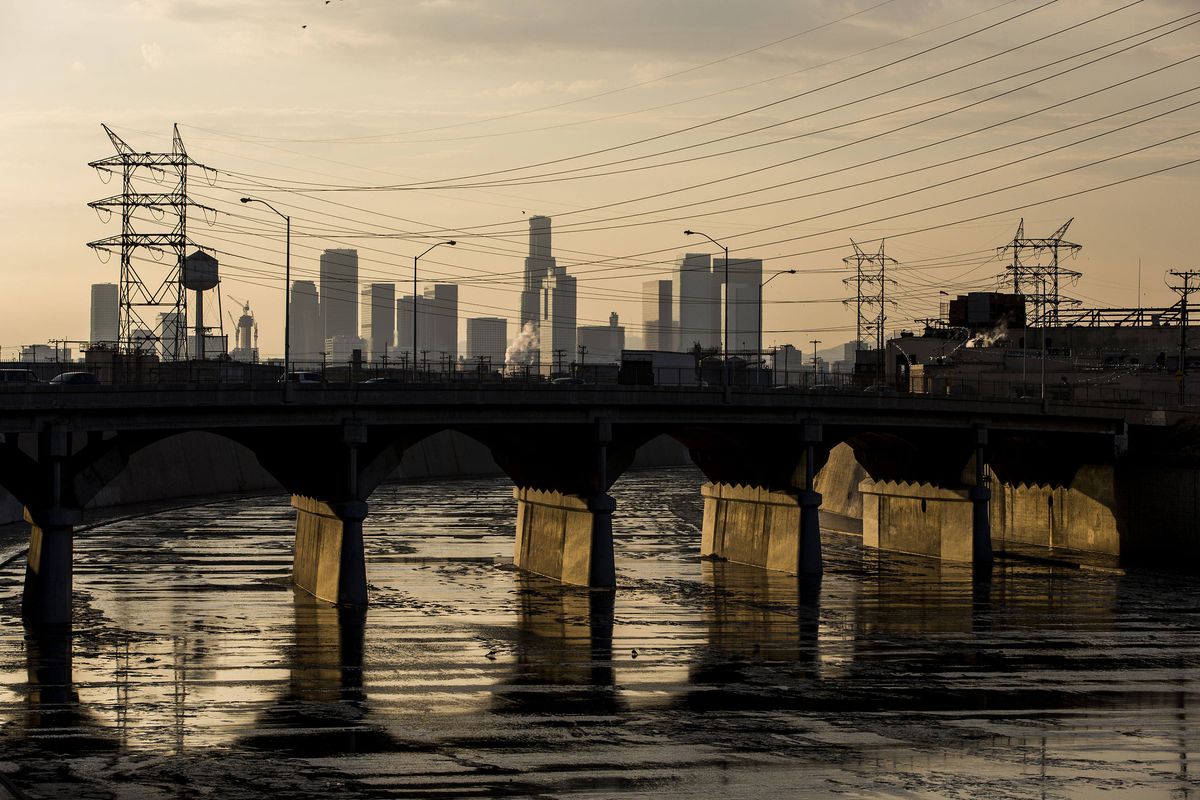Architect Gehry helping on plan for Los Angeles River
Concrete waterway stretches 51 miles

LOS ANGELES – Architect Frank Gehry is working with city officials to draft a new master plan for the redevelopment of the Los Angeles River, bringing the avant-garde sensibilities of one of the world’s best-known artistic celebrities to the struggle to remake 51 miles of the Los Angeles Basin’s largely desolate central waterway.
Gehry’s designs for the flaring steel walls of the Guggenheim Museum in Bilbao, Spain, and the Walt Disney Concert Hall in Los Angeles have become icons of contemporary architecture. Since last year, he has been quietly at work on what officials describe as the beginnings of an overarching plan for the bridges, bike paths, walkways and other improvements intended to revive public use of the river as it winds from the San Fernando Valley to Long Beach.
Many details of the Los Angeles-based architect’s vision remain under wraps. Mayor Eric Garcetti and the L.A. River Revitalization Corp., a nonprofit group created to coordinate the renewal effort, had not planned to announce Gehry’s role until later this month. After the Los Angeles Times disclosed Gehry’s involvement Friday, Garcetti said the architect is working on the project pro bono and producing “a master plan, in the truest sense of the word.” The mayor compared it to the work of famed urban designer Frederick Law Olmsted, who created New York City’s Central Park.
“To have the Olmsted of our time focusing on this, I think, is extraordinary,” Garcetti said at an unrelated City Hall news conference.
Gehry’s involvement marks a potential turning point in a decades-long struggle to reinvent the river and its concrete-lined banks. But his plan is getting a cold reception from some of the activists who helped draw attention to the cause.
Some express concern about the secrecy surrounding Gehry’s work and the lack of public input on what could be a far-reaching blueprint for the river’s future. They also warn that announcing a new direction for river redevelopment might imperil federal funding for a $1.4 billion, 11-mile restoration project in northeast Los Angeles and downtown.
Those concerns came to a head this week, when Friends of the Los Angeles River, the nonprofit group led by Lewis MacAdams, sent a letter to the River Revitalization Corp. refusing to endorse the Gehry effort.
In the letter, MacAdams said he feared the “new vision and plan for the river led by Frank Gehry” would “undermine our efforts” to secure funding from the U.S. Army Corps of Engineers and “create confusion among the public and political leadership.”
In an interview, MacAdams said his group’s decision not to endorse the project stemmed partly from philosophical opposition to the sort of top-down land-use planning that led the federal government in the mid-20th century to turn a meandering river into an unsightly drainage channel.
“Last time there was a single idea for the L.A. River it involved 3 million barrels of concrete,” MacAdams said. “To us, it’s the epitome of wrong-ended planning. It’s not coming from the bottom up. It’s coming from the top down.”
Barbara Romero, deputy mayor for city services, said there would be an extensive outreach process to solicit Los Angeles County residents’ thoughts as Gehry’s work moves forward. She said the process for soliciting such input was “to be determined” and would be handled by the River Revitalization Corp.
Romero said Gehry had been studying the river in conjunction with the Revitalization Corp. since at least last November. She said his work would “build on” the Army Corps-funded restoration project, not interfere with it.
“At the end of the day, the L.A. River is an infrastructure system,” she said. “Having someone like Frank Gehry involved elevates it.”
Gehry has designed some of the world’s most recognizable buildings. His most famous structures are characterized by a free-handed sculptural style – the jagged steel profile of Disney Hall that looms over downtown is one example – that has drawn both praise and criticism.
Los Angeles’ largely arid concrete riverbed is the latest in a series of urban waterways targeted for redevelopment. The most famous is perhaps the San Antonio River Walk, which attracted more than 9 million nonresident tourists last year and millions more locals.